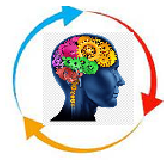What We Do
Leading Edge, Mission-Critical HR Applications
In collaboration with C-Suite executives in large and mid-sized organizations, we are engaged in building NextGen solutions that enhance the capabilities of HR decision-makers to achieve a more people-centric strategy that aligns with business outcomes. We have high level expertise in AI Prompt Engineering that enables our team to exploit the advantages of this game-changing technology.
Our core technology expertise enables us to bring advanced Gen AI solutions in HR that complement existing systems and enhance decision-making that builds competitive advantage for our customers.

It is early in the game. We have the core solution ready to be proven. A blunt tool at present but is better than none. These tools get sharpened with use and time!
We have launched an MVP in the first phase which you can use and provide feedback. Below are some details on the issues in HR that we are addressing.
Interested in joining us? You can participate in helping to shape this initiative.
Urgent need in HR
C-Suite executives today see HR as primarily an expense center. HR Managers are unable to show how their huge expenditures in recruitment, training and other HR activities contribute to the business success.
The problem is widespread affecting most large and mid-sized organizations. Most of them do not have the basic HR data like an up-to-date skills inventory which is the basis for most HR decision-making. You cannot chart the way forward if you do not know where you are!
What's needed are the right people data and HR analytics that decision-makers can use to enable the business to overcome decision obstacles. There is a need to get to a single source of vital HR data truth that can drive business outcomes, and improve workforce planning.
Shortcomings in current HR systems
HR systems in use today fail to respond to the demands of the C-Suite. While useful for HR managers, data produced by traditional HR applications are not designed to meet the requirements of today's HR executives who are looking for data on the contribution of HR expenditure to the business bottom line.
HR applications in use by most organizations focus on :record keeping for employee data management, benefits administration, payroll processing, reporting and analytics, time and attendance management and employee self-services, where the focus is on smarter hiring, turnover review, diversity-equity-inclusion promotion, maximizing learning investment, rewarding performance, planning career paths and the like.

Urgent action needed
To effectively align people processes and develop a long-term, flexible strategy, HR needs to invest in high-quality data and appropriate analytics capabilities. For businesses that want to stay ahead of their competition, investment is urgently needed in newer solutions that enable more precise, accurate tracking of people skills and performance, data that support strategic HR conversations and continuously enhance data-driven decision-making.
While most organizations want to do this, they are stymied by the dearth of proper solutions that address the issues. So they are not prioritizing it high enough. Until they do, people planning will remain stagnant, reactive and inefficient, and the scale of their capability challenges will only get bigger.
THEY MISS THE KEY POINT : HOW DO HR ACTIVITIES CONTRIBUTE TO THE BOTTOM LINE.
They fail to answer the key questions asked by the C-Suite : How HR expenditures contribute to the business bottom line in any of these industries :
WorkforceAI fills the void
WorkforceAI goes beyond the hype to building the solutions. We take a radically different approach from traditional HRIS, HRMS and HCM systems.
AI is at the core of what we do!
Our focus is on :HR decision-making, speed, workforce intelligence and a skills first, human centric strategy, data, technology and people, corporate strategy & business goals, workforce readiness and HR analytics.
The WorkforceAI team is dedicated to continuously exploit the power of generative AI to produce the vital data that enable HR executives to better align their strategy and business expectations and empower executives to make decisions that improve organizational competitiveness.

Our primary focus is to provide critical data needed to guide talent management decisions, reinforcing the relationships among finance, operations, and all business units.
BENEFITS
KEY BENEFITS OF HR ANALYTICS
Data-Driven Decision Making
Improved Talent Management
Enhanced Operational Efficiency
Stronger Alignment with Business Goals
Competitive Advantage
